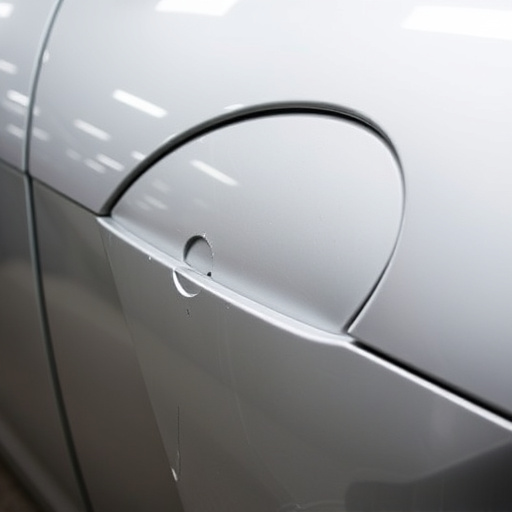Mercedes memory seat repair requires understanding advanced technology involving sensors, actuators, and electronic modules. Common issues include faulty electric actuators, control module glitches, and corrosion causing incorrect positions or lost memory functions. Reputable collision centers' qualified technicians use specialized diagnostic tools to accurately identify problems, ensuring tailored repairs for optimal performance and longevity of these intricate components.
Unwinding after a long day should never be hindered by faulty Mercedes memory seat functionality. This comprehensive guide delves into the intricate world of Mercedes memory seat repair, focusing on understanding the advanced mechanisms behind these comfortable seats and identifying common issues. We explore how diagnostic tools play a pivotal role in accurate repairs, ensuring your Mercedes provides the ultimate relaxation experience once again. Whether you’re a professional or DIY enthusiast, this article equips you with knowledge to tackle memory seat problems effectively.
- Understanding Mercedes Memory Seat Functionality
- Identifying Common Issues with Memory Seat Mechanisms
- Utilizing Diagnostic Tools for Accurate Repairs
Understanding Mercedes Memory Seat Functionality

Mercedes memory seats are a sophisticated feature designed to provide personalized comfort and support for each driver. This advanced technology allows the seat to remember and replicate specific settings, such as favorite seating positions, providing a tailored experience every time the vehicle is occupied. Understanding how these seats work is crucial when undertaking Mercedes memory seat repair. The system typically involves a series of sensors, actuators, and electronic modules that collaborate to detect and adjust various parameters like recline angle, lumbar support, and even temperature settings.
When troubleshooting issues with a Mercedes memory seat, whether after a minor collision or a fender bender, it’s essential to diagnose the problem accurately. A qualified technician can use specialized diagnostic tools to scan for error codes and monitor the communication between various components. This process helps identify faulty sensors, actuators, or control modules, enabling efficient collision repair if needed. Such repairs are best handled by experienced professionals at a reputable collision repair center who understand the intricate mechanisms of Mercedes memory seat functionality.
Identifying Common Issues with Memory Seat Mechanisms

Mercedes memory seat mechanisms, though sophisticated, can develop common issues over time. One frequent problem is the malfunctioning of the electric actuators, which are responsible for adjusting the seat position. This may result in a sluggish response or even complete failure to move, significantly impacting the overall comfort and convenience of the vehicle’s occupants. Another typical concern involves the control module, which manages the memory settings; it can experience glitches or corrosion over time, leading to incorrect seat positions or a total loss of memory functions.
Proper diagnostics are key to addressing these issues effectively. Technicians at reputable Mercedes service centers utilize advanced tools to identify problems with memory seat mechanisms, ensuring accurate and efficient repairs. By employing specialized equipment for electrical system analysis and control module testing, they can pinpoint the exact cause of the malfunction, be it a faulty sensor, a compromised circuit, or a corrupted software update. This meticulous approach guarantees that any repair work undertaken is tailored to the specific needs of each Mercedes memory seat, ensuring optimal performance and longevity in the vehicle’s interior like meticulously restored automotive body work.
Utilizing Diagnostic Tools for Accurate Repairs

In the realm of Mercedes memory seat repair, diagnostic tools play a pivotal role in ensuring accurate and efficient fixes. These advanced instruments allow automotive repair experts to pinpoint issues within complex systems that control seating positions, lumbar support, and other ergonomic features. By utilizing diagnostic scanners and sensors, technicians can swiftly identify faulty components or miscommunications in the vehicle’s onboard computer. This not only saves time but also minimizes the risk of further damage during the repair process.
For instance, modern Mercedes vehicles are equipped with sophisticated electronic systems that manage various settings, making automotive repair more intricate than ever. Diagnostic tools enable specialists to access real-time data from these systems, enabling them to perform precise repairs on components like electric motors, sensors, and microcontrollers. This level of accuracy is crucial for maintaining the vehicle’s optimal performance and comfort, especially in features as integral as Mercedes memory seat repair.
In conclusion, diagnosing and repairing a Mercedes memory seat mechanism effectively requires a thorough understanding of its intricate functionality and the utilization of appropriate diagnostic tools. By identifying common issues early on and employing accurate repair techniques, you can ensure your Mercedes vehicle maintains its comfort and luxury features. Remember that proper maintenance and timely repairs are key to preserving the value and performance of your Mercedes memory seat over time.














